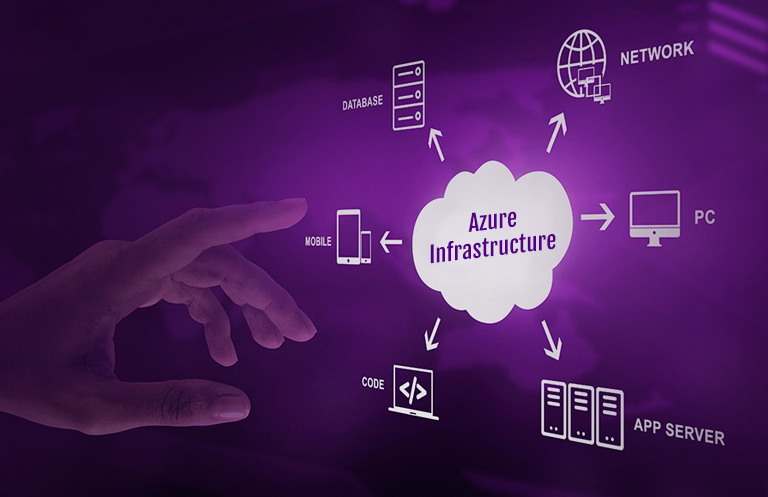Big data and business analytics are projected to grow at a CAGR of 13.5%as per Allied Market Research. The valuation of the industry is expected to grow from $198.08 billion in 2020 to $684.12 billion by 2030.Below are some top trends that will work as primary factors to ensure the growth ofbig data & analytics in 2022 and going forward:
Top Trends in Big Data and Analytics
Data fabric
A data fabric regulates management practices across the Edge, Cloud, and on-premise with the help of powerful architecture, a set of data services that provide capabilities for endpoints in the multi-cloud environment. There are many advantages of leveraging data fabric such as easy access and control of data, data security, and real-time insights into the data. The architecture for data fabric is built upon a set of data organizing principles that deliver consistency across all environments. Besides, it offers intelligent ways toutilizethe best of Edge, Core, and Cloud.
Analytics Ops
Many organizations have started using Data Ops to improve automation, collaboration, test ability, and implementation of data processes. It has also brought newer processes into production. With that, Analytics Ops is fast emerging as a new function. The primary function of Analytic Ops involves leveraging analytics from the data team and deploying it into the data stream of the business using R, Python, and a spreadsheet of values.
Self-Service Analytics
Data analytics services are widely used for many use cases and are bringing revolutionary changes in various industries. Data analytics serves as a perfect combination of technology and human intelligence. Its vast use cases and popularity have paved the way for the emergence of self-service analytics services. These services help individuals with no background in data science to extract actionable insights from robust data. There are tools available in the market that offer self-service business intelligence capabilities and generate real-time reports.
Augmented Analytics
With the help of AI/ML and natural language generation for data insights, augmented analytics provides automation and self-evolution of data preparation, discovery, and sharing. It generates insights that help improve the decision-making process and optimize it. By providing intelligent automation, it reduces the workload on machine learning professionals and data scientists. As per the Allied Market Research report, the global Augmented Analytics market size is projected to reach $29,856 million by 2025.
Shifting to Small and Wide Data from Big Data
AI has penetrated all industries and is serving multiple use cases with the advancement of deep learning and lateral language adoption. Data fabric and composable analytics in the combination of AI, are enabling companies to analyze a blend of small and large chunks of data including both structured and unstructured data.
For example, although a conventional data source is used to provide a column for the shade of an element, a datapoint that is AI-driven has many columns (known as features) to ask “Is it pink? Is it purple? Is it grey?” and many more. These similar sets of questions would require a special database engine.
Enterprises are likely to shift toward leveraging big, small, and wide sources as a key capability to harness the power of data in the coming years. As per Gartner’sreport, 70% of enterprises are expected to move from big data to small and wide data by 2025 to enable more context for analytics and intelligent decision-making.
Context-driven analysis
Graph technology provides context-driven information. The graphs are developed to represent data in a specific manner enabling deeper analysis that shows the relationship between two different data points. It also helps in doing so based on comparisons, limitations, paths, and groups. Leveraging this type of contextual information to analyze further using AI techniques provides different data types that are related to each other.
One of our clients, a global leader in advanced telecommunication and networking technologies, has developed a broad range of award-winning products for homes, businesses, and service providers.The client was facing difficulty in integrating new events(automation) for marketing campaign success and was incurring additional costs for processing huge events for different marketing projects. They were looking for a technology partner to simplify a complex predictive analytics implementation on top of unstructured data.
eInfochips deployed a framework thatconverts the unstructured data of different events coming from marketing campaigns into structured and implementedpredictive analyticsthat can help make data-driven strategic decisions. eInfochips also created a rule engine to easily merge and overlay new events and campaigns, while providingcompletedata visibility that helps optimizemarketing investments.
Final Thoughts
If any form of data is extracted, stored, managed, and analyzed correctly, it can be a source of substantial competitive advantage. Enterprises are leveraging the power of data for the growth of the business, improving user experience, and creating a data-driven company culture. The futuristic trends for data analytics will help enterprises identify growth opportunities for their business and enable them to leverage the data insights to focus oncorrective actions that generate new sources of revenue stream.
To know more about our data analytics services, talk to our experts today.













